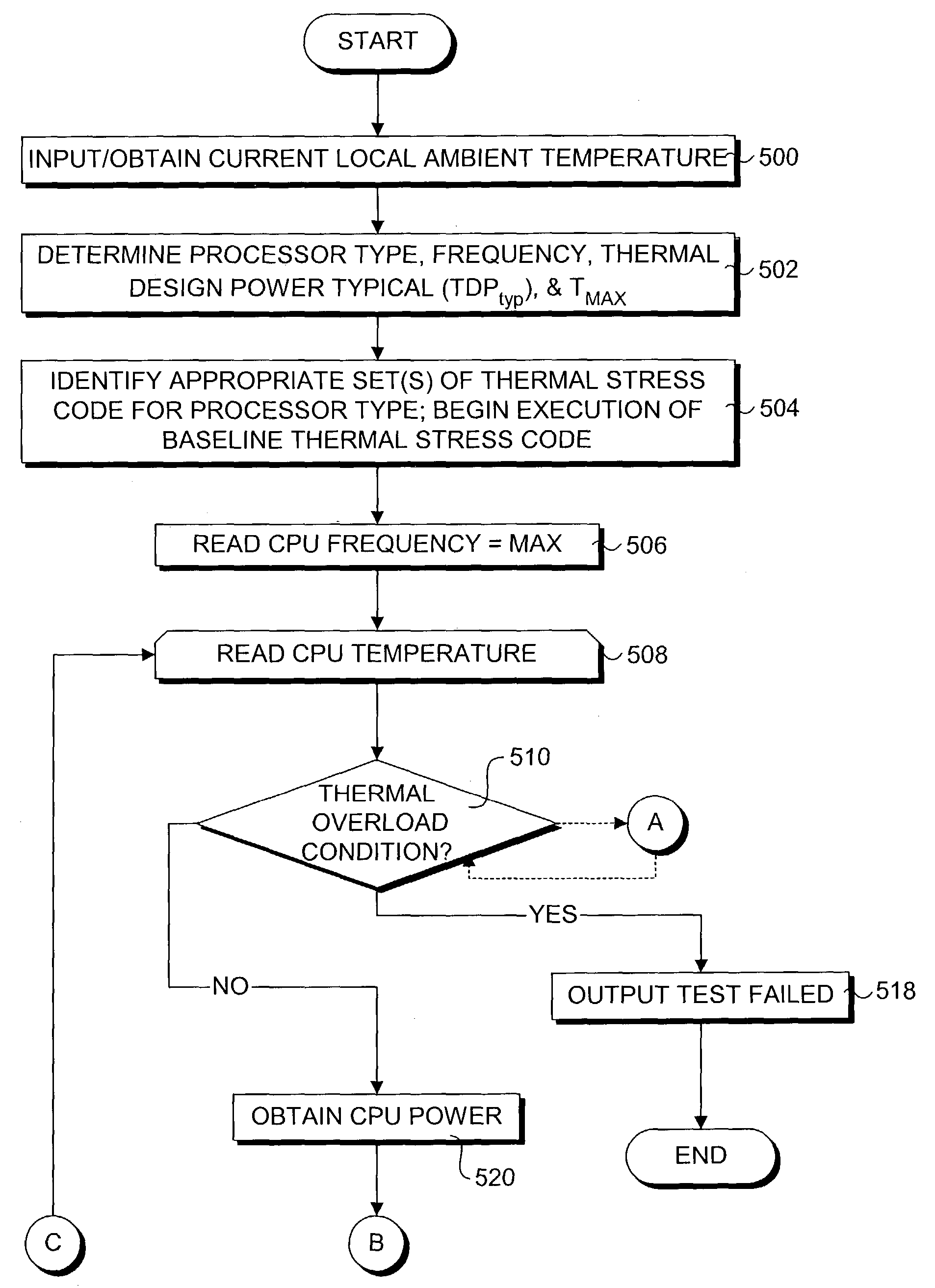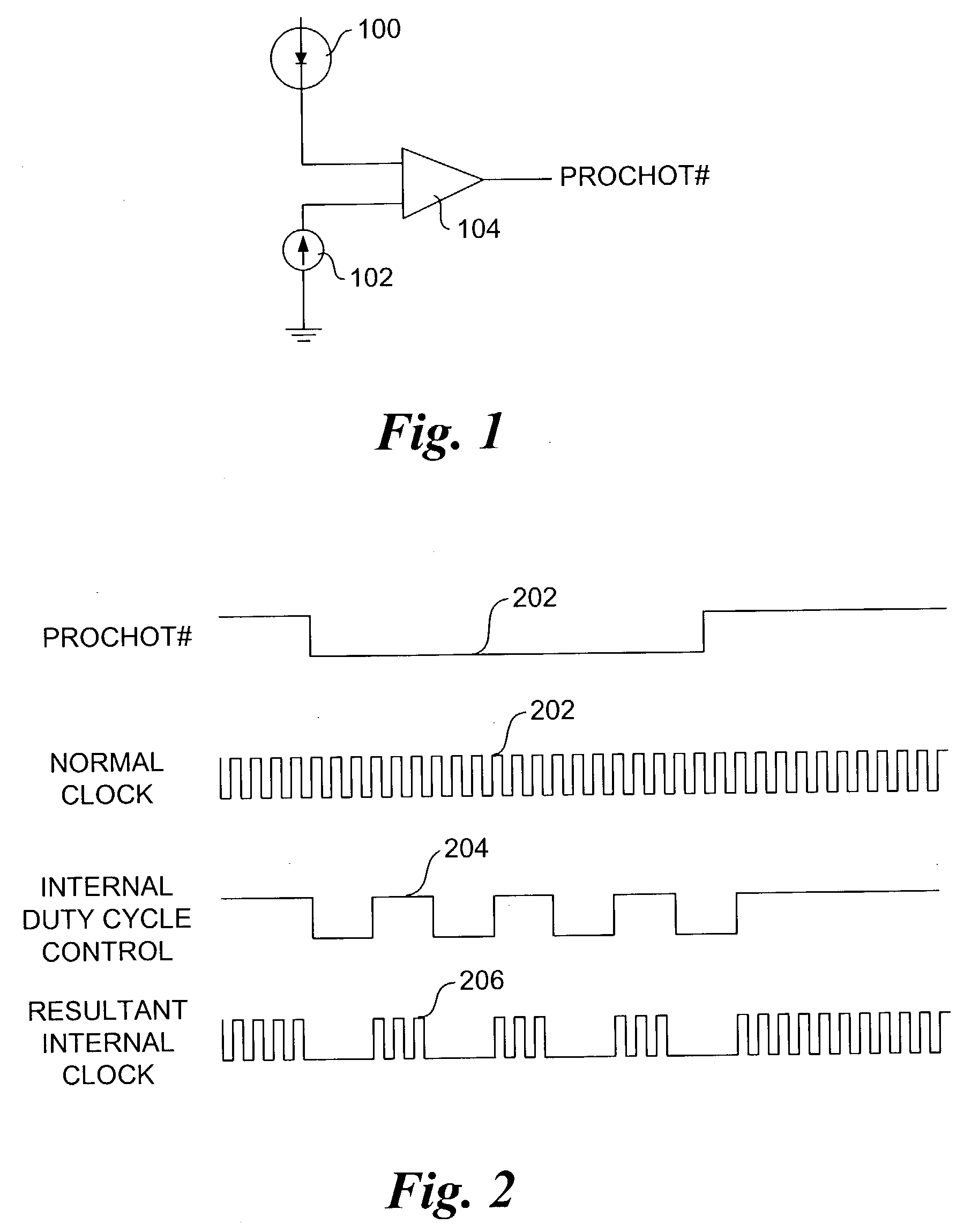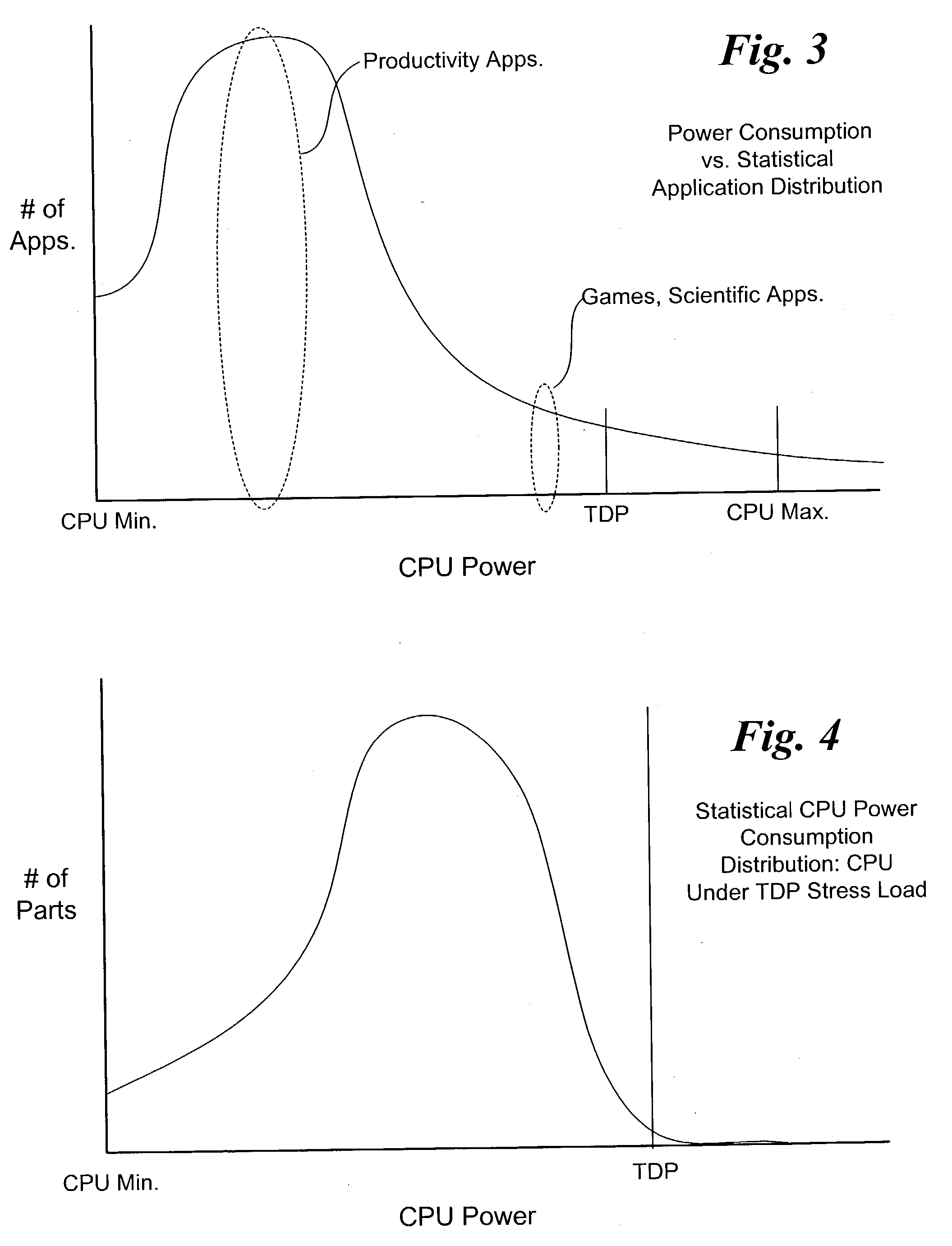Automated method and apparatus for processor thermal validation
a technology of thermal validation and automatic processing, which is applied in the direction of electrical apparatus casings/cabinets/drawers, fire alarms, instruments, etc., can solve the problems of microprocessor failure, internal breakdown of processor circuits, and excess hea
- Summary
- Abstract
- Description
- Claims
- Application Information
AI Technical Summary
Problems solved by technology
Method used
Image
Examples
Embodiment Construction
may be Implemented
[0063] Returning to FIG. 7, laptop computer 700 is further generally illustrative of various platforms that can be tested using embodiments of the thermal solution validation software scheme disclosed herein. For example, a typical platform will include a motherboard having a processor, memory, chipset components, and other IC, which is disposed in a chassis. Generally, the chassis may comprise a laptop case, or may comprise a desktop or server case. The platform will also include peripheral devices, such as floppy drives, CD ROM drives, hard disks, etc., which are usually internally housed in the chassis.
[0064] The software comprising the thermal solution validation test application (and optional supporting modules) will typically be loaded via a floppy drive or CD ROM and stored on a hard disk or other persistent storage device in the platform. Optionally, the test code may be loaded at run-time from a floppy disk or a CD ROM. As yet another optional loading mech...
PUM
| Property | Measurement | Unit |
|---|---|---|
| temperatures | aaaaa | aaaaa |
| thermal stress | aaaaa | aaaaa |
| power dissipation | aaaaa | aaaaa |
Abstract
Description
Claims
Application Information
 Login to View More
Login to View More - R&D
- Intellectual Property
- Life Sciences
- Materials
- Tech Scout
- Unparalleled Data Quality
- Higher Quality Content
- 60% Fewer Hallucinations
Browse by: Latest US Patents, China's latest patents, Technical Efficacy Thesaurus, Application Domain, Technology Topic, Popular Technical Reports.
© 2025 PatSnap. All rights reserved.Legal|Privacy policy|Modern Slavery Act Transparency Statement|Sitemap|About US| Contact US: help@patsnap.com



